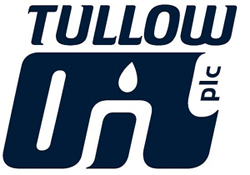No oil in first exploration well in South Omo
By Kaleyesus Bekele
 The UK oil firm, Tullow Oil, did not find oil in the first exploration well it drilled in its concession in the South Omo basin, it was learnt.
The UK oil firm, Tullow Oil, did not find oil in the first exploration well it drilled in its concession in the South Omo basin, it was learnt.
Reliable sources told The Reporter that the drilling crew of Tullow Oil Ethiopia did not find oil flow in the first exploration well dubbed Sabisa-1. The well is drilled in a locality 15 km from Omorate town. Tullow started drilling on the first well last January. In a statement issued in April, Tullow said it encountered hydrocarbons requiring logging and further evaluation.
The Sabisa-1 well in the South Omo Block in Southern Ethiopia has been drilled to a total depth of 1810 metres. Tullow said hydrocarbon indications in sands beneath a thick claystone top seal have been recorded whilst drilling, but hole instability issues have required the drilling of a sidetrack to comprehensively log and sample these zones of interest.
The sidetrack commenced in April and was completed in June. A Polish drilling contractor, OGEC, is conducting the drilling operation. The crew drilled horizontally due to the challenging nature of the well. Sources told The Reporter that the crew collected useful data that indicate the presence of oil in the area but did not find the oil reserve.
According to sources, the company is in the process of starting work on the second well. “Tullow will soon mobilize its drilling crew to the second well site once the rainy season is over,†sources said. The second well will be drilled near Chew Bahir.
Officials of Tullow declined to comment on the matter saying that they would soon issue a press statement.
Tullow has a 50 percent stake on the South Omo concession while the Vancouver-based company, Africa Oil, owns 30 percent and the US company, Marathon Oil, has 20 percent stake.
Petroleum experts The Reporter talked to said that Tullow did not find an oil inflow in the well. The company targeted to drill 2600 meters but was unable to go deeper than 1810 due to the instability of the well. The experts said that the instability is caused by the existence of oil shell in the area. “Since there are oil shells in the well, the earth could not hold the drilling pipe tight this has been a very challenging task for the drilling crew. There is sandstone (reservoir rock) and shell (the source rock). These are the hydrocarbon indications that the company found in the well,†the experts said.
Though Tullow did not note oil inflow it has encountered a working petroleum system (reservoir rock and source rock). “This shows that though there is no oil in the first well the existence of reservoir and source rock is an indication of oil reserve in the region. In the history of oil exploration you do not discover oil reserve in the first exploration well. These findings would be useful information for the planned second and third exploration well. The results obtained in the first well are encouraging to carry out further exploration work. It is not discouraging,†the experts said. The company spent more than 60 million dollars in the first well.
The seismic data collected by BGP Geo Services, the Chinese company contacted by Tullow Oil, from the South Omo concession has demonstrated the presence of oil in the area. “I am sure oil would be discovered in the second or third exploration well,†one of the experts told The Reporter.



